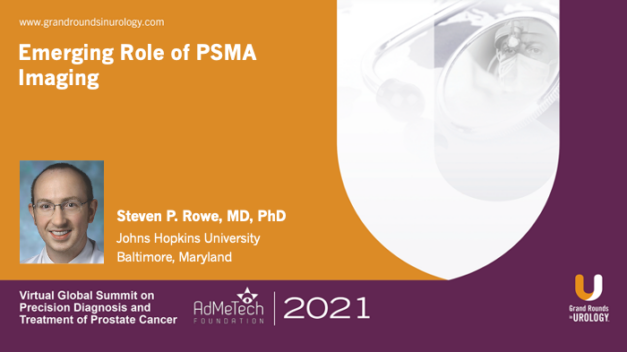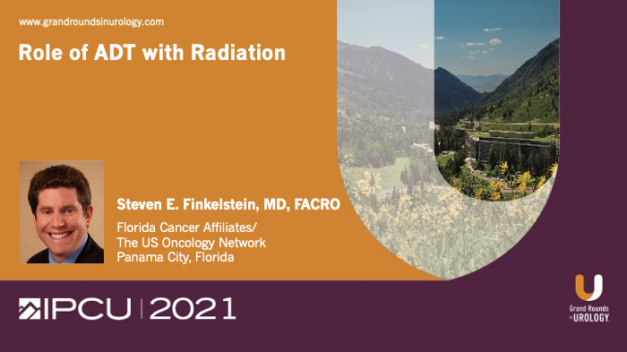Emerging Role of PSMA Imaging
Steven P. Rowe, MD, PhD, Associate Professor of Radiology and Radiological Science at Johns Hopkins University in Baltimore, Maryland, discusses the emerging role of prostate-specific membrane antigen (PSMA) imaging. He defines PSMA as a transmembrane carboxypeptidase highly expressed in prostate cancer cells. This expression has been observed in over 95 percent of prostate cancer tumors, with a direct correlation between expression levels and tumor aggressiveness. Due to this, Dr. Rowe asserts that PSMA is an excellent target for molecular imaging of prostate cancer. Dr. Rowe displays a PSMA structure and activity diagram and explains that PSMA positron emission tomography (PET) has moderate sensitivity and very high specificity for pre-operative nodal staging, high detection efficiency for sites of biochemical recurrence (BCR), and can effectively guide focal therapy for oligometastases and is effective in selecting patients for endoradiotherapy. He then discusses each of these in more detail, highlighting data from a study that evaluated the diagnostic performance of PSMA-targeted 18F-DCFPyL PET/computerized tomography in the preoperative staging of men at high risk for harboring metastatic prostate cancer. Dr. Rowe shows data on PSMA-based therapy and points out that for patients with more widespread metastatic disease, treatment may include PSMA inhibitors such as lutetium-177. Dr. Rowe expects that lutetium-based PSMA therapy will be approved by the FDA and become part of the standard of care for patients with widespread metastatic disease. Dr. Rowe then outlines lingering questions about PSMA PET imaging, including how prognostic findings may look for different patient populations, how doctors should follow response to therapy given that decreasing androgen signaling leads to increase in PSMA expression, and what role artificial intelligence (AI) is going to play. Dr. Rowe illustrates data from the Observation vs. Stereotactic Ablative Radiation for Oligometastatic Prostate Cancer (ORIOLE) trial results for oligometastatic disease, pointing out that patients who had all lesions visible on a PSMA scan treated had better outcomes than those who only had a subset of their PSMA-positive lesions treated. Dr. Rowe predicts that in the near term, AI will provide lesion classification, whole-body tumor burden assessments, and prognostication and decision-making based on scan findings and clinical data. In conclusion, Dr. Rowe explains that, based on existing studies, there are already multiple indications for diagnostic PSMA-based imaging, with the caveat that researchers are just starting to understand PSMA-targeted PET findings as imaging biomarkers, and currently there are still questions about the interface of PSMA PET with AI.
Read More

